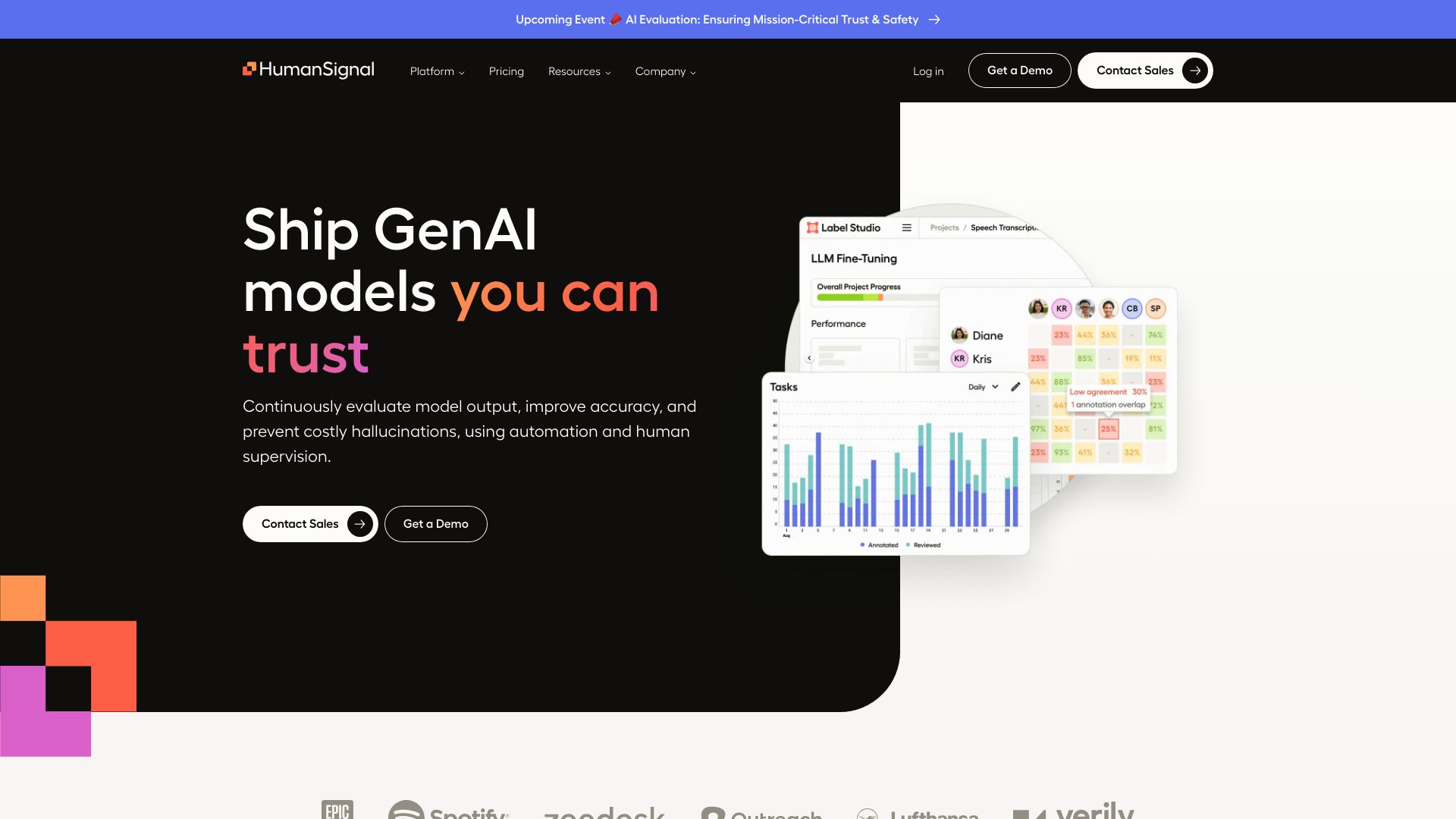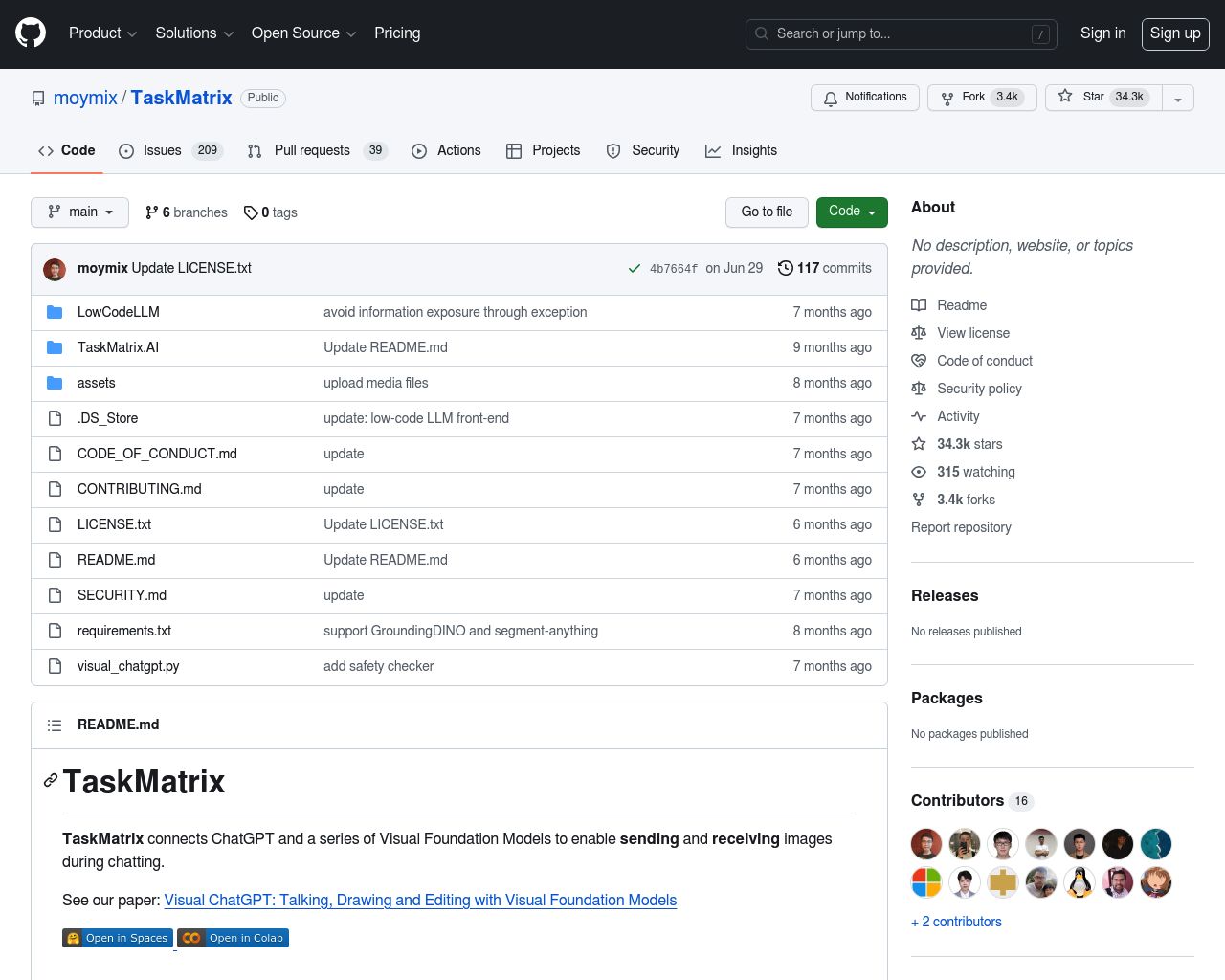Adala And TaskMatrix: A Comprehensive Comparison of Features and Offerings
AI agent development platforms revolutionize how businesses harness advanced technologies. Adala, TaskMatrix, and SmythOS offer unique approaches to creating and deploying AI agents, each with distinct strengths. This comparison examines their core features, integration capabilities, and overall utility for diverse user groups. We’ll explore how Adala excels in autonomous data labeling, TaskMatrix bridges foundation models with specialized APIs, and SmythOS provides a comprehensive solution for AI agent creation and deployment.
By analyzing these platforms, readers will gain insights into selecting the most suitable AI development tool for their specific needs, whether they’re developers seeking powerful customization options, business leaders prioritizing scalability and security, or non-technical users looking for accessible AI solutions.
Adala Overview
Adala revolutionizes data labeling with autonomous AI agents. This open-source framework, developed by HumanSignal, empowers data scientists to create intelligent agents that learn from ground truth datasets and evolve into efficient prediction engines. Adala’s agents excel at tasks like classification and labeling, continuously improving their performance through iterative interactions with data.
Adala revolutionizes data labeling with autonomous AI agents… empowers data scientists to create intelligent agents that learn from ground truth datasets and evolve into efficient prediction engines.
The platform’s strength lies in its ability to automate large-scale data labeling tasks while maintaining high accuracy. Adala integrates seamlessly with various AI models, including advanced options like GPT-4 and Huggingface, allowing users to leverage cutting-edge machine learning capabilities. The framework supports multiple data types, including text, video, and other formats, making it versatile for diverse labeling needs.


Adala emphasizes the synergy between human expertise and AI capabilities. The platform incorporates human feedback into the training process, ensuring that AI agents align with human values and produce reliable results. This approach reduces bias and improves the overall quality of labeled data, crucial for developing robust AI models.
Adala emphasizes the synergy between human expertise and AI capabilities… ensuring that AI agents align with human values and produce reliable results.
While Adala offers powerful features for data labeling automation, it lacks some capabilities found in comprehensive AI agent builders. The platform does not provide a visual builder or no-code editor, which may limit accessibility for non-technical users. Additionally, there’s no mention of specific debug modes or agent work schedulers, which could impact the development and management of complex labeling projects.
Despite these limitations, Adala’s focus on autonomous data labeling agents, coupled with its support for collaborative workflows and detailed activity logs, positions it as a valuable tool for data scientists and research teams working on large-scale labeling projects. The platform’s emphasis on explainability, transparency, and data security further enhances its appeal for organizations prioritizing trustworthy AI development.
TaskMatrix Overview
TaskMatrix.AI, developed by Microsoft, enhances general-purpose foundation models like GPT-4 by integrating them with specialized models through APIs. This AI-powered ecosystem functions as a project manager, bridging diverse AI models to perform a wide range of tasks efficiently.
The system connects foundation models with specialized APIs, enabling the execution of both digital and physical tasks. TaskMatrix.AI understands user instructions, generates executable action codes, and performs tasks using appropriate APIs. Its key components include a conversational foundation model, a comprehensive API platform, an API selector, and an action executor.
TaskMatrix.AI enhances general-purpose foundation models like GPT-4 by integrating them with specialized models through APIs. This AI-powered ecosystem functions as a project manager, bridging diverse AI models to perform a wide range of tasks efficiently.


TaskMatrix.AI stands out with its seamless integration of multiple AI models and systems. The platform supports custom AI model creation, provides pretrained models and API connectors, and offers an extensive resource library for developers. Its modular design and continuous learning capability make it a versatile tool for integrating advanced AI into various operations.
While TaskMatrix.AI offers powerful capabilities, it may present challenges for users without technical expertise. The platform’s focus on API integration and custom model development suggests a steeper learning curve compared to more user-friendly alternatives. Additionally, the open-source nature of the project may result in less streamlined support and documentation compared to commercial offerings.
TaskMatrix positions itself as a cutting-edge AI ecosystem for developers and businesses looking to leverage advanced AI capabilities. Its ability to connect powerful foundation models with millions of APIs enables an extensive range of tasks across different domains, making it a significant advancement in artificial intelligence.
Feature Comparison
Adala and TaskMatrix showcase different approaches to AI agent development, each with distinct strengths and limitations. Adala excels in autonomous data labeling, leveraging AI agents to learn from ground truth datasets and evolve into efficient prediction engines. TaskMatrix, on the other hand, focuses on integrating foundation models with specialized APIs to perform a wide range of tasks.
In terms of core components, TaskMatrix offers a more comprehensive ecosystem for AI development. It provides a conversational foundation model, an extensive API platform, and an action executor, enabling the creation of versatile AI agents capable of performing both digital and physical tasks. Adala’s strength lies in its specialized focus on data labeling, but it lacks the broader application range that TaskMatrix offers.
Regarding security features, both platforms emphasize data protection, but TaskMatrix’s integration with Microsoft’s ecosystem might provide a more robust security framework. Adala’s open-source nature, while beneficial for customization, may require additional effort to ensure enterprise-level security. TaskMatrix’s ability to connect with millions of APIs also suggests a more extensive range of security protocols and integrations.
Feature Comparison Table
| Adala | TaskMatrix | SmythOS | |
|---|---|---|---|
| CORE FEATURES | |||
| Visual Builder | ❌ | ✅ | ✅ |
| No-Code Options | ❌ | ✅ | ✅ |
| Audit Logs for Analytics | ❌ | ✅ | ✅ |
| SECURITY | |||
| IP Control | ❌ | ✅ | ✅ |
| COMPONENTS | |||
| Data Lakes | ❌ | ❌ | ✅ |
| DEPLOYMENT OPTIONS (EMBODIMENTS) | |||
| Staging Domains | ❌ | ✅ | ✅ |
| Production Domains | ❌ | ✅ | ✅ |
| Deploy as Scheduled Agent | ❌ | ✅ | ✅ |
| DATA LAKE SUPPORT | |||
| Hosted Vector Database | ✅ | ❌ | ✅ |
| Sitemap Crawler | ❌ | ❌ | ✅ |
| YouTube Transcript Crawler | ❌ | ❌ | ✅ |
Best Alternative to Adala and TaskMatrix
SmythOS emerges as the superior alternative to Adala and TaskMatrix, offering a comprehensive AI agent development platform with unparalleled ease of use and versatility. Our drag-and-drop interface eliminates coding barriers, allowing users to create sophisticated AI agents without extensive technical knowledge. SmythOS boasts an expansive feature set that outshines competitors, including advanced memory and context handling, autonomous agent capabilities, and seamless multi-agent collaboration. We provide unmatched flexibility in deployment options, enabling users to integrate AI solutions across various environments and platforms.
SmythOS emerges as the superior alternative to Adala and TaskMatrix, offering a comprehensive AI agent development platform with unparalleled ease of use and versatility.
SmythOS excels in data management with our hosted vector database and support for diverse data types, from PDFs to YouTube transcripts. Security remains a top priority, with robust encryption and OAuth implementation protecting sensitive information. Unlike Adala’s limited focus on data labeling or TaskMatrix’s reliance on foundation models, SmythOS offers a complete ecosystem for AI agent development, empowering users to tackle unlimited use cases efficiently. Our platform’s scalability and extensive API integrations ensure that SmythOS can adapt to growing business needs while seamlessly connecting with existing systems. By choosing SmythOS, users gain access to cutting-edge AI technology that streamlines workflows, enhances productivity, and drives innovation across industries.
Conclusion
Adala, TaskMatrix, and SmythOS each offer unique approaches to AI agent development and deployment. Adala excels in autonomous data labeling, while TaskMatrix provides a comprehensive ecosystem for integrating foundation models with specialized APIs. However, SmythOS stands out as the superior choice for businesses and developers seeking a versatile, user-friendly platform for AI agent creation and deployment.
SmythOS’s drag-and-drop interface and extensive integration ecosystem make it accessible to users of all technical levels, addressing a key limitation of both Adala and TaskMatrix. With support for over 300,000 integrations and compatibility with various AI models, SmythOS offers unparalleled flexibility and scalability. The platform’s “Create Once, Deploy Anywhere” approach enables seamless deployment across multiple environments, from chatbots to APIs and scheduled agents.
While Adala and TaskMatrix have their strengths in specific areas, SmythOS provides a more comprehensive solution for businesses looking to harness the power of AI. Its focus on explainability, security, and scalability makes it an ideal choice for enterprise-level deployments. Additionally, SmythOS’s support for multi-agent collaboration and problem-solving capabilities surpasses the offerings of its competitors.
To experience the full potential of AI agent development and deployment, explore SmythOS’s diverse range of AI-powered agent templates. These templates cover multiple business categories and offer a starting point for creating custom AI solutions. For those ready to dive in, create a free SmythOS account and start building AI agents with no time limit or risk. With SmythOS, you’ll revolutionize your approach to AI integration and unlock new levels of productivity and innovation for your business.
Last updated:
Disclaimer: The information presented in this article is for general informational purposes only and is provided as is. While we strive to keep the content up-to-date and accurate, we make no representations or warranties of any kind, express or implied, about the completeness, accuracy, reliability, suitability, or availability of the information contained in this article.
Any reliance you place on such information is strictly at your own risk. We reserve the right to make additions, deletions, or modifications to the contents of this article at any time without prior notice.
In no event will we be liable for any loss or damage including without limitation, indirect or consequential loss or damage, or any loss or damage whatsoever arising from loss of data, profits, or any other loss not specified herein arising out of, or in connection with, the use of this article.
Despite our best efforts, this article may contain oversights, errors, or omissions. If you notice any inaccuracies or have concerns about the content, please report them through our content feedback form. Your input helps us maintain the quality and reliability of our information.
